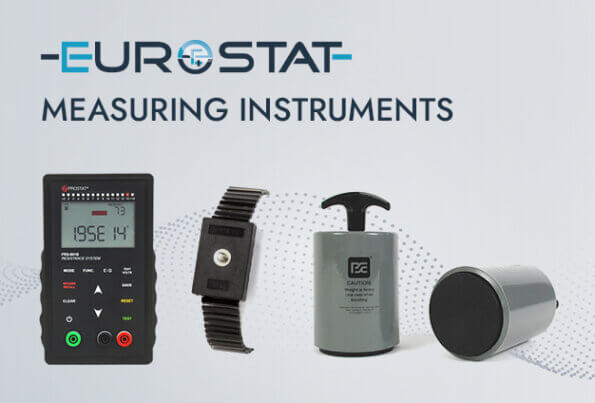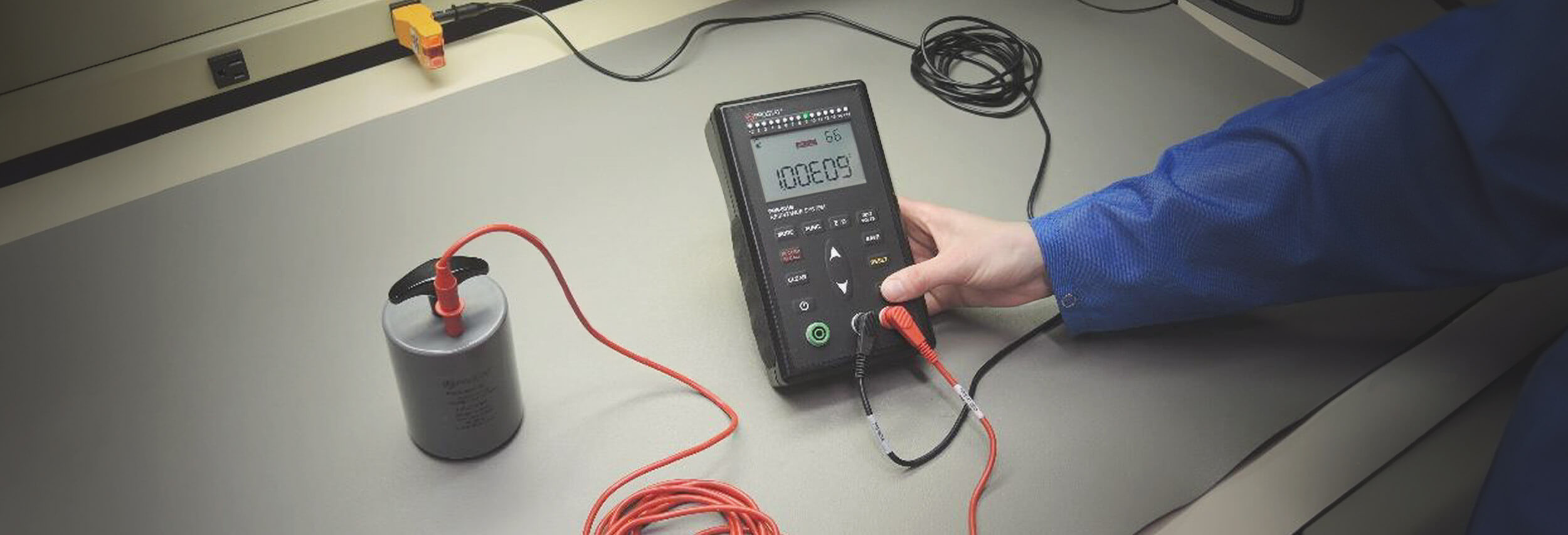
ESD Lab Coat Testing Procedure
A person who wears normal clothing, generates electric fields which emit from his/ her clothing. These electric fields can cause electric charging of objects in close vicinity. Touching these objects after exposure to electric fields, can create an ESD event and potentially cause ESD damage. The electric field of personal garments is effectively shielded off, by using static control garments or even groundable static control garments (with integrated wrist strap function).
The wearer must be connected to a known ground reference point, for static control garments to be effective. Should this be neglected, then the static control garment essentially becomes an isolated conductor, which can just as easily emit electric fields (and thus ultimately cause damage), as the personal clothing worn underneath it.
This means that any person that wears a static control garment must be connected to ground, either through one (or more) of the following connections: a wrist strap, conductive shoes and a conductive flooring system, or through a groundable static control garment with integrated wrist strap function.
Subsequently, anyone who wants to use a wrist strap or conductive shoes in combination with a conductive flooring system in order to work ESD safe, must also wear (groundable) static control garments in order to fully meet the required levels of ESD prevention.
The ESD lab coat testing procedure mandates measuring the fabric’s electrical conductivity on the Ohms scale to ensure it qualifies as ‘static dissipative’. Additionally, the fabric must be grounded, meaning it is electrically bonded to a grounding system to prevent it from becoming an isolated floating conductor.
As per IEC 61340-5-1, ESD garments fall into three categories: ‘Static Control Garments’, ‘Groundable Static Control Garments’, or ‘Groundable Static Control Garment with integrated wrist strap function‘.
ESD Lab Coat Testing Requirements for IEC 61340-5-1
The fundamental requirement for an ESD lab coat is its static dissipative nature, indicating that the surface resistance measured from one panel to another is below 1 x 10^11 Ohms.
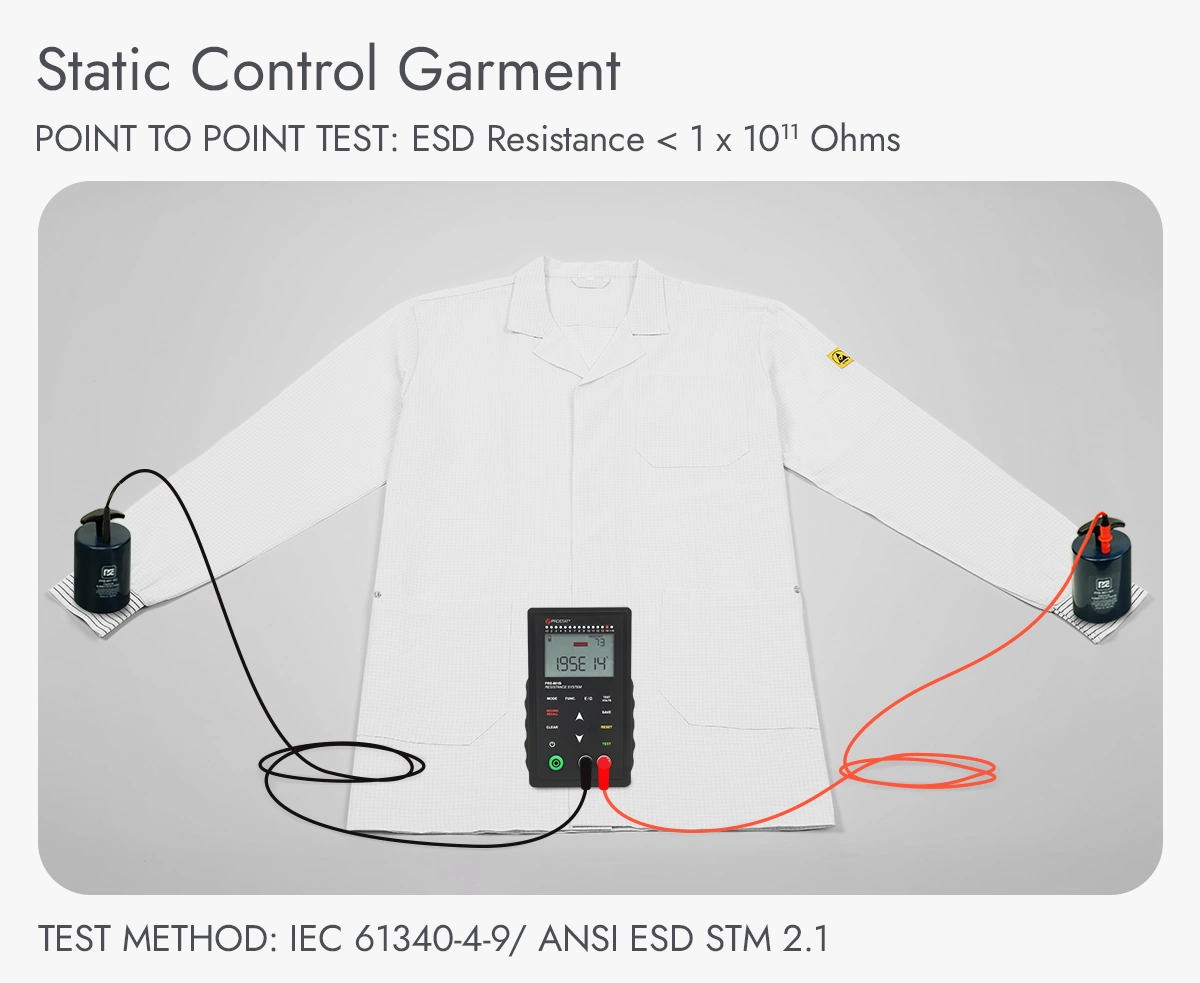
A “Static Control Garment” is characterized by having a surface resistance of < 1 x 10^11 Ohms measured point-to-point on the garment.
To conduct this test, the garment needs to be electrically isolated, typically laid on an insulative surface. Subsequently, position the electrodes connected to the meter on the sleeve panels of the garment.
The meter will then gauge the lowest resistance path between the electrodes placed on the sleeve panels.
This procedure is sometimes denoted as a “panel-to-panel conductivity” test because it assesses resistance across all the panels of the garment, encompassing sleeves, torso, and other components.
A “Groundable Static Control Garment” is defined by a surface resistance of < 1 x 10^9 Ohms measured both point-to-point and point-to-groundable point.
To conduct the point-to-groundable point test, one of the electrodes originally placed on a sleeve panel is substituted with a ground connection.
The stipulation of having less than 1 x 10^9 Ohms (1 gigOhm) resistance is noteworthy as it aligns with the recommendations of IEC 61340-5-1/ ANSI ESD S20.20.
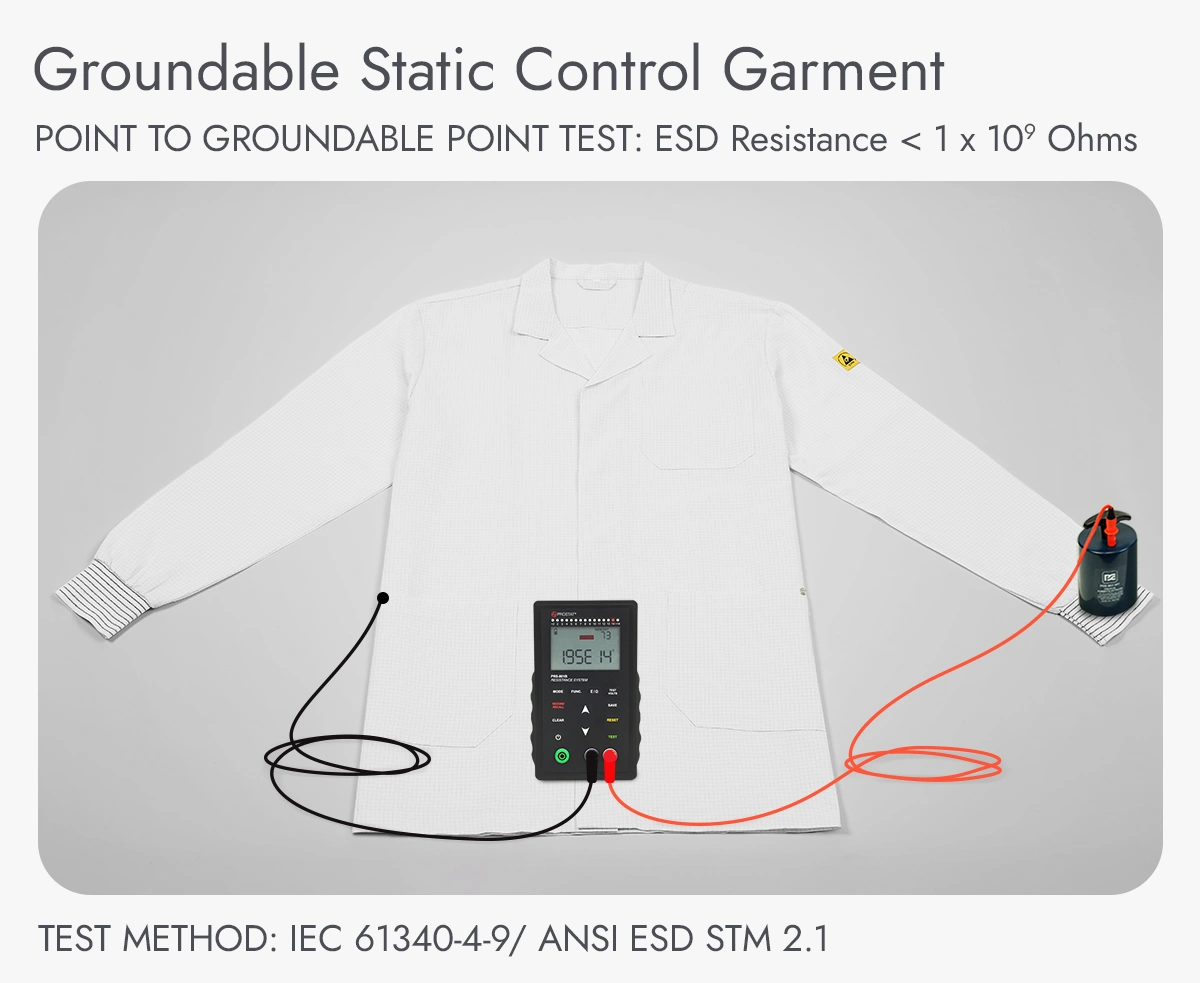
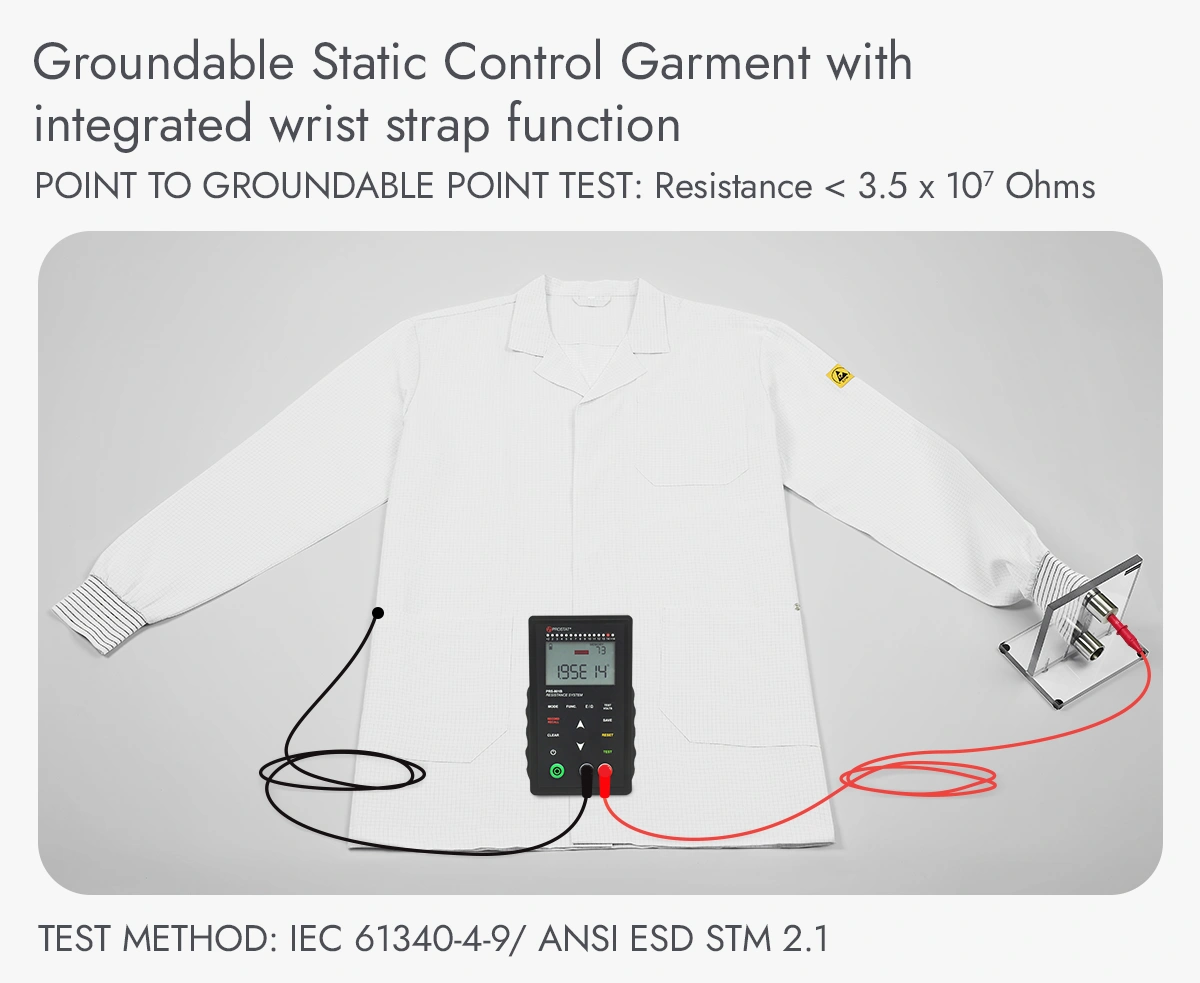
A “Groundable Static Control Garment with integrated wrist strap function” is characterized by a resistance of < 3.5 x 10^7 Ohms measured between cuff and the groundable point.
IEC 61340-5-1 requires that for situations where an ESD garment is used as part of the wrist strap grounding path, the total system resistance, including the person, garment, and grounding cord, shall be less than 3.5 x 10^7 Ohms.
This holds significance as it aligns with IEC 61340-5-1/ ANSI ESD S20.20’s recommendation that wrist straps should have a resistance of < 3.5 x 10^7 Ohms.


